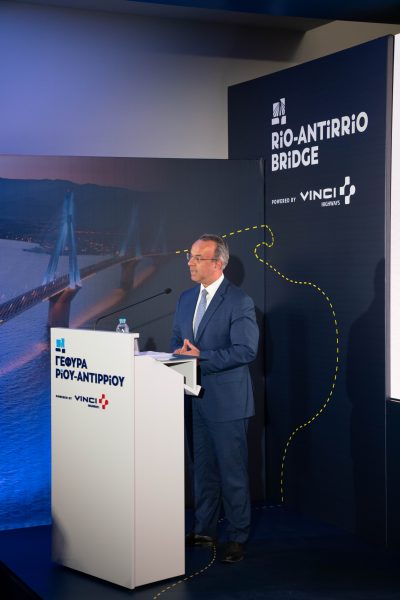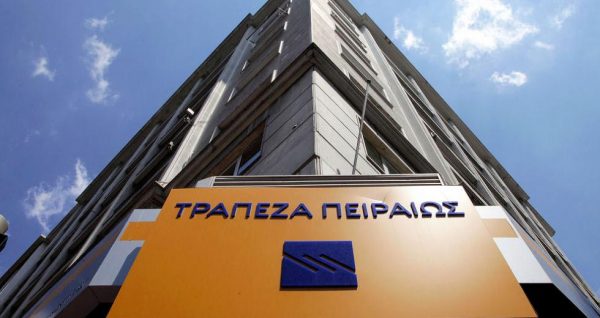
The percentage of small and medium-sized enterprises that invest in new technologies with the vast majority of them, to finance investments with own funds, utilizing to a small extent even the available financial resources of tools (eg NSRF).
This emerges from the upcoming research of the Institute of Small Businesses of the General Confederation of Professional Craftsmen of Greece (GSEVEE) for the period of the second half of 2021, in terms of digital transformation trends at the level of very small and small enterprises.
Conclusions
Indicatively, some of the main conclusions that emerge from the data of the research of the Institute, are summarized in the following points:
– The percentage of companies that invest in new technologies is very limited. Specifically, 21.8% of companies invested in technology equipment and digital investments (eg software, digital devices and applications) in the previous six months. Accordingly, an examination of the individual components of turnover reveals a direct correlation with the level of turnover.
Specifically, in the category of companies with a turnover of up to 50,000 euros, 17.9% made investments, in the category of companies with a turnover of up to 50,000-100,000 euros, 23.2% made investments, in the category of companies with a turnover of up to 100,000-300,000 euros, made investments 25.8%, while in the category of companies with a turnover of over 300,000 euros, 32.2% made investments.
– 15.6% of companies made investments in the previous half of the year in Mechanical equipment and other machinery (eg vehicles). Respectively, in the category of enterprises with a turnover of up to 50,000 euros, 9.9% made investments, in the category of enterprises with a turnover of up to 50,000-100,000 euros, 14.5% invested, in the category of enterprises with a turnover of up to 100,000-300,000 euros 21.8% made investments, while in the category of companies with a turnover of over 300,000 euros, 29.6% made investments.
– Regarding the amount of investments, 44% made investments in the category of amounts up to 4,000 euros. 10% of companies invested in the category of amounts of 5,001 euros to 10,000 euros and 10.7% made investments in the category of amounts from 10,001 to 20,000 euros. 8.8% made investments in the category of amounts from 20,001 euros to 50,000 euros, while 6.1% made investments in the category of amounts from 50,001 euros to 100,000 euros. 65.5% of companies invest in categories up to 10,000 euros.
An important point concerns the correlation observed between the amount of investments and turnover, where it is observed that companies with a turnover of more than 300,000 euros make investments in larger numbers. For example, in the category over 300,000 euros, 18.5% of companies make investments of 20.001-50.000 euros, compared to companies in the turnover categories up to 50,000 euros (2.1% of companies), 50,000 to 100,000 euros (6.8% of companies) and 100,000 to 300,000 euros (12.7% of companies).
– For future investments, it is recorded that 15.3% of companies answered that they intend to make some kind of investment within the next six months.
– At the level of adoption of new digital technologies, companies state that they have integrated digital technologies in the following percentages: 58.4% digital marketing, website and social media, 26.3% devices and systems that are monitored or controlled remotely via the Internet, 20.3% digital order procurement management, 17.3% electronic sales systems (e-shop), 16.5% participation in an online platform, 14.1% processing and analysis of product / commercial activity data, 6% automation applications in the production procedure.
– Regarding the digital adaptation of micro and small enterprises in the recent period, it appears that a very low percentage (17.4%) state that they have integrated digital technologies during the pandemic. Respectively, a particularly high percentage of 56.2% of companies record electronic sales only up to 20%, while 16.1% make sales at a rate of more than 50% of turnover.
An important observation concerns the sources of investment financing for businesses. The realization of investments through equity concerns the particularly high percentage of 86.4%. The financing programs concern 6%, while the bank lending concerns 3.8%. Consequently, the vast majority of businesses finance investments with equity using to a lesser extent even the available financial resources of tools (eg NSRF).
Latest News

Lavrio Port Authority Next Up for Privatization
A deadline for the submission of expressions of interest is May 14, 2024

Eurostat: Greece Records Largest Drop in Natural Gas Prices in 2nd Half of 2023
The price of electricity and natural gas in Europe was down following a substantial surge that began before the Russian invasion of Ukraine and peaked in 2022

GEK TERNA Still Considers Leveraging Concessions Portfolio as Financial Tool
President and CEO of Gek Terna George Peristeris explained the company's plans on Tuesday on the sidelines of the inauguration of sections of Greece's E65 highway

NielsenIQ: 3% Supermarket Revenue Increase in Q1
Private label products are gaining traction, comprising 25.4% of shopping basket shares, up from 24.7%

Store Hours Change Today in Observation of Orthodox Easter
The President of the Athens Chamber of Commerce hopes the Easter period will provide a much-needed boost to retail traffic in the capital

Athens-area Mass Transit Systems Set to Finally Install Contact-less Fare Payment
Paying fares via bank cards, smartphones and smartwatches in all mass transit systems in the Greek capital, namely, buses, trolleys, the metro and tram lines, is scheduled by the end of the year

Council of State Rejects Motion Against Thessaloniki Motorway Project
The motion was filed earlier this month by three local citizens’ and environmental groups and generated a high court decision for a temporary stay in construction

Greek 30Y Bond Issue Oversubscribed by 11 Times
Very high demand pushed down the coupon's interest rate to 4.125%

Athens Int’l Airport Wins Top Prize at Routes Europe Awards
The Routes business is focused entirely on aviation route development and the company's portfolio includes events, media and online businesses

IOBE: Income Gap Between Poor and Wealthy Greeks Widens
The findings in the analysis, entitled “Progressivity in Income Taxation in Greece, 2012-2021", paint a bleak picture for Greeks in the bottom half of the income bracket, warning that income inequality is growing












































 Αριθμός Πιστοποίησης Μ.Η.Τ.232433
Αριθμός Πιστοποίησης Μ.Η.Τ.232433